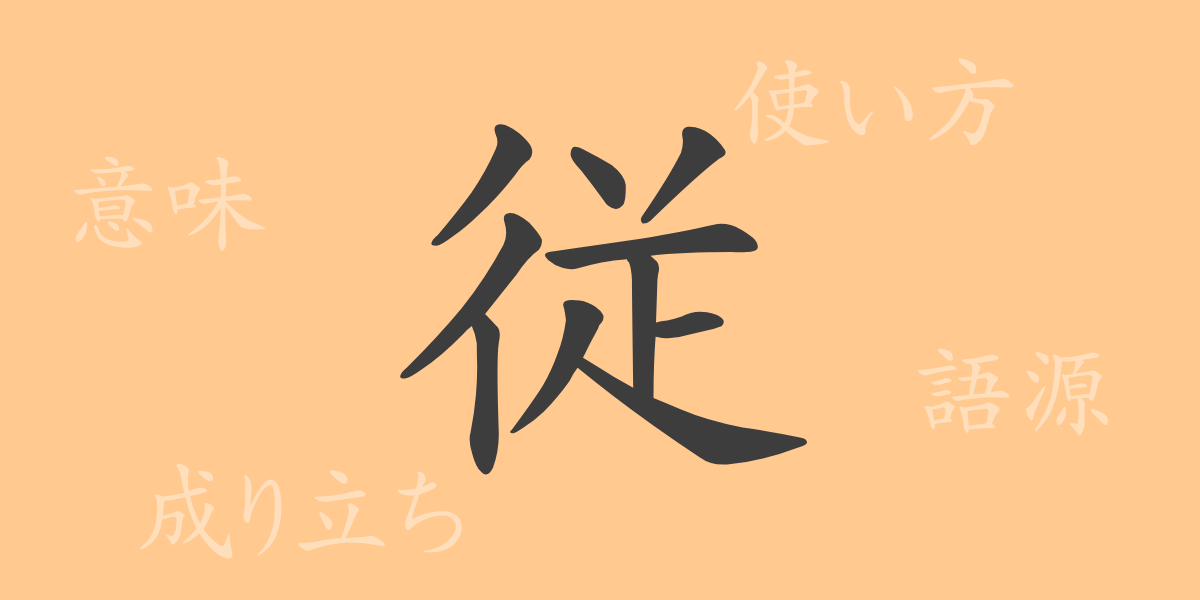Language is a mirror of culture, and kanji reflect the history and philosophy of East Asia. The commonly used Japanese kanji “従(じゅう, jū)” is a character that reveals a deep historical and cultural background through its shape and meaning. In this article, we will explore the origins of “従(じゅう, jū)”, its modern usage, and how it is integrated into the Japanese language.
従(じゅう, jū)の成り立ち(語源)
The kanji “従(じゅう, jū)” originates from ancient China. Its form originally symbolized a follower accompanying a leader, depicted as “從”, showing two people walking in the same direction. This represented the meanings “to follow” or “to comply.” Over time, the shape evolved into the modern “従(じゅう, jū)”, but its fundamental meaning remains unchanged.
従(じゅう, jū)の意味と用法
The kanji “従(じゅう, jū)” means “to follow,” “to comply,” or “to engage in” something. It signifies adherence to rules or orders and can also denote location or sequence. In phrases like “従って(したがって, shitagatte)” (therefore), it is used to explain causality or reason.
従(じゅう, jū)の読み方・画数・部首
“従(じゅう, jū)” has multiple readings in Japanese, depending on its usage.
- 読み方: 音読みでは「ジュウ(じゅう, jū)」「ショウ(しょう, shō)」「ジュ(じゅ, ju)」、訓読みでは「したがう(したがう, shitagau)」「より(より, yori)」「したがえる(したがえる, shitagaeru)」と読みます。
- 画数: 「従(じゅう, jū)」は全14画の漢字です。
- 部首: 部首は「彳(ぎょうにんべん, gyōninben)」です。
従(じゅう, jū)を使った熟語・慣用句・ことわざとその意味
Numerous idioms and phrases feature the kanji “従(じゅう, jū)”, showcasing the richness of Japanese expression.
- 従兄弟(いとこ, itoko) – Cousin.
- 従容(じゅうよう, jūyō) – Calm and composed demeanor.
- 従来(じゅうらい, jūrai) – Previously, up to now.
- 従順(じゅうじゅん, jūjun) – Obedient, willing to listen.
- 従事(じゅうじ, jūji) – Engaging in a particular job.
従(じゅう, jū)についてのまとめ
The kanji “従(じゅう, jū)” symbolizes following or adherence, reflecting its shape. It is widely used in idioms and phrases, playing a significant role in the Japanese language. Through this article, we have uncovered the deep meanings of “従(じゅう, jū)” and its diverse uses in Japanese. Learning the history and culture behind each character connects us to the past and present through the journey of language.

























